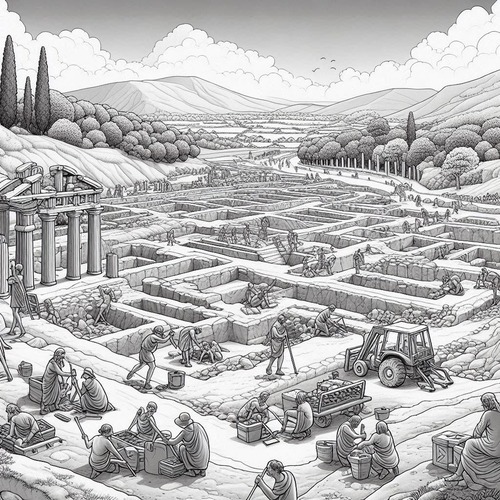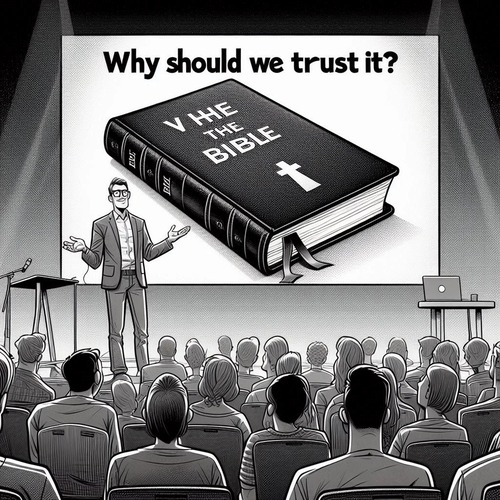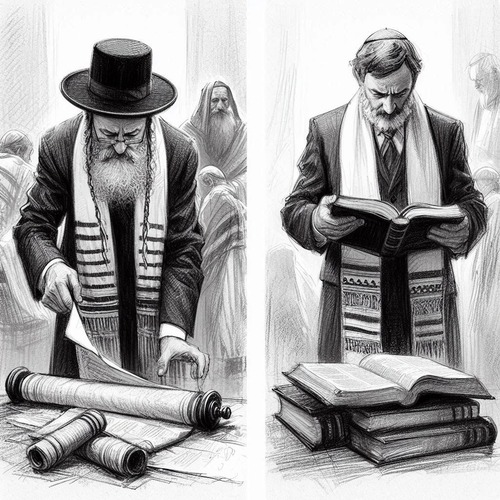Leviticus 21: Why Does God Forbid the Disabled From Priesthood?
Few passages in Scripture create more immediate discomfort for modern readers than Leviticus 21:16-23, where God instructs Moses that men with physical disabilities may not serve as priests in offering sacrifices. At first glance, this seems to contradict the biblical witness of God’s care for the vulnerable and marginalised. How do we make sense of this difficult text?
DOES GOD FORBID THE DISABLED? THE PROHIBITION IN CONTEXT
It’s crucial to note the restriction (Leviticus 21:16-20) was specifically about offering sacrifices at the altar. Those with disabilities were not completely excluded from the priesthood—they could still eat the holy food, participate in priestly duties away from the altar, and remain part of the priestly families. The prohibition applied solely to the act of offering sacrifices.
The restriction appears within the broader context of the Levitical holiness code, which established Israel as a nation distinct from surrounding peoples. The tabernacle (and later temple) represented the symbolic realm of God’s perfect presence, with increasing levels of holiness as one approached the Most Holy Place.
WHAT THE RESTRICTION WASN’T ABOUT
Before exploring what the restriction meant, we should clarify what it did not mean. The restriction:
- Wasn’t suggesting that people with disabilities were less valuable as human beings
- Didn’t imply spiritual inferiority or moral failing
- Wasn’t meant to stigmatise or marginalise
- Didn’t reflect God’s ultimate view of disability
In fact, elsewhere in Scripture, God repeatedly commands care for the vulnerable, including those with disabilities. Leviticus 19:14 specifically prohibits mistreating the deaf and blind. The restriction in Chapter 21 had a specific ceremonial purpose that we need to understand.
THE REFORMED VIEW: SYMBOLIC PERFECTION
From a Reformed perspective, the key to understanding the passage lies in its typological significance. The priests of the Old Testament were living symbols pointing forward to Christ, the perfect High Priest who was to come.
The physical “wholeness” required of priests served as a shadow of Christ’s true perfection. Just as sacrificial animals had to be “without blemish,” the priests who offered them had to symbolically represent wholeness in their physical bodies. This created a consistent system of visual teaching tools that would ultimately point to Jesus.
The tabernacle system operated through physical signs that represented spiritual realities. The physical requirement wasn’t about the inherent value of the person but about the symbolic role they temporarily fulfilled in God’s redemptive plan.
CHRIST FULFILLS WHAT THE LAW FORESHADOWED
The author of Hebrews explains Jesus is “a high priest, holy, blameless, undefiled, separated from sinners, and exalted above the heavens” (Hebrews 7:26). The physical “perfection” required of Old Testament priests foreshadowed the true moral, spiritual, and ontological perfection of Christ.
Jesus fulfils and transforms these symbolic requirements. His perfection wasn’t primarily physical but involved His sinless nature and complete obedience. Once Christ established His perfect priesthood, the need for symbolic shadows fell away.
In Christ, the priesthood is no longer limited by physical requirements because the reality to which those requirements pointed has arrived. This is why the New Testament establishes the priesthood of all believers (1 Peter 2:9), without physical qualification.
THE RADICAL INCLUSION OF THE NEW COVENANT
Under the New Covenant, the body of Christ includes all believers regardless of physical condition. The symbolic restrictions of the Old Testament give way to the substance found in Christ. The church now celebrates that:
- All believers are part of a royal priesthood
- Physical conditions no longer restrict access to God
- The dignity of all image-bearers is fully affirmed
- Christ’s perfection covers all of our imperfections
Paul emphasises this radical inclusion when he writes, “Those parts of the body that seem to be weaker are indispensable, and the parts that we think are less honourable we treat with special honour” (1 Corinthians 12:22-23).
READING SCRIPTURE CHRISTOLOGICALLY
When we encounter difficult passages like Leviticus 21, we must read them through the lens of their fulfilment in Christ. The temporary priestly restriction served a purpose in its time—it taught Israel about the holiness of God and the perfect mediator who would come. But it was always intended to give way to the greater reality of Christ’s perfect priesthood and the inclusion of all believers in him.
Rather than seeing Leviticus 21 as a contradiction to God’s love for all people, we see it as part of the unfolding revelation that culminates in Jesus, who welcomes all who come to him in faith, regardless of physical condition.
In Christ, there are no second-class citizens in God’s kingdom. The barriers represented by the Old Testament ceremonial law have been demolished through His perfect work. What was once a shadow has given way to the glorious substance of Christ himself, who calls all people—of every ability and condition—to Himself.
DOES GOD FORBID THE DISABLED? RELATED FAQs
How does Leviticus 21 fit with passages that show God’s special care for the vulnerable? Scripture consistently demonstrates God’s particular concern for those society often marginalised, including people with disabilities, widows, and orphans. Passages like Deuteronomy 10:18, Psalm 68:5, and Isaiah 1:17 reveal God as defender and advocate for the vulnerable. The ceremonial restrictions in Leviticus existed within this broader context of God’s compassion and were symbolic rather than reflective of God’s ultimate valuation of people with disabilities.
- What do contemporary Reformed scholars say about this John Frame and Michael Beates emphasise the typological nature of these restrictions while affirming the inherent dignity of all image-bearers. Many point to the contrast between Israel’s treatment of people with disabilities (which was relatively progressive for the ancient world) and the cruel practices of surrounding nations. Richard Lints and Kevin Vanhoozer particularly focus on how Christ’s perfect priesthood transforms our understanding of these ceremonial regulations.
- Did Jesus specifically address attitudes toward disability in his ministry? Jesus consistently challenged cultural stigmas around disability by healing the disabled not just physically but by restoring them to community. His interactions with the blind, lame, and those with various conditions demonstrated disability was not a punishment for sin (John 9:1-3). Jesus specifically included “the crippled, the lame, and the blind” in his vision of the kingdom feast (Luke 14:13-14), signaling a reversal of the exclusion symbolized in the Levitical priesthood.
How should these passages shape church inclusion of people with disabilities today? Churches should recognise the symbolic restrictions of Leviticus have been fulfilled in Christ and have no bearing on ministry roles today. People with disabilities should be welcomed into all aspects of church life including leadership, worship leading, and sacramental responsibilities. The church should actively work against ableism by ensuring physical accessibility, providing necessary accommodations, and valuing the unique spiritual insights and gifts that people with disabilities bring to the body of Christ.
- Does emphasis on God’s sovereignty suggest disability is part of God’s design? Reformed theology affirms God’s sovereignty over all creation while distinguishing between God’s perfect will and his permissive will in a fallen world. Disabilities can be understood as part of the broader effects of living in a creation subject to futility (Romans 8:20-22). At the same time, God uniquely uses every human experience—including disability—to display His glory, develop spiritual character, and advance His kingdom purposes (as with Paul’s thorn in 2 Corinthians 12:7-10).
- How do we reconcile the idea of resurrected “perfect” bodies with affirming disability as part of identity? Many contemporary disability theologians and Reformed thinkers suggest resurrection bodies may preserve aspects of disability while removing suffering and limitation. Just as Christ’s resurrected body retained his wounds (John 20:27), our resurrection may involve transformation rather than erasure of distinctive embodied experiences. The “perfection” of resurrection bodies may be better understood as full functionality according to God’s purposes rather than conformity to conventional standards of physical normalcy.
What prophetic passages suggest a reversal of the Leviticus 21 restrictions? Isaiah’s messianic prophecies specifically highlight the inclusion of those with disabilities in God’s redemptive work. Isaiah 35:5-6 promises “the eyes of the blind shall be opened, and the ears of the deaf unstopped; then shall the lame man leap like a deer.” Even more pointedly, Isaiah 56:3-5 promises eunuchs (who were excluded from full participation under Mosaic law) “a monument and a name better than sons and daughters.” These passages anticipate the New Covenant’s radical inclusion that Christ would establish.
DOES GOD FORBID THE DISABLED? OUR RELATED POSTS
Editor's Pick

The Nashville Statement: Why Affirm It Despite Media Backlash?
WHY DO REFORMED CHRISTIANS STAND BY THIS STATEMENT ON MARRIAGE AND GENDER? When the Nashville Statement was released in 2017, [...]

Who Is Belial? Solving The 2 Corinthians 6:15 Mystery
Belial: This name from the pages of Scripture chills the soul. Who is this mysterious figure Paul invokes in 2 [...]
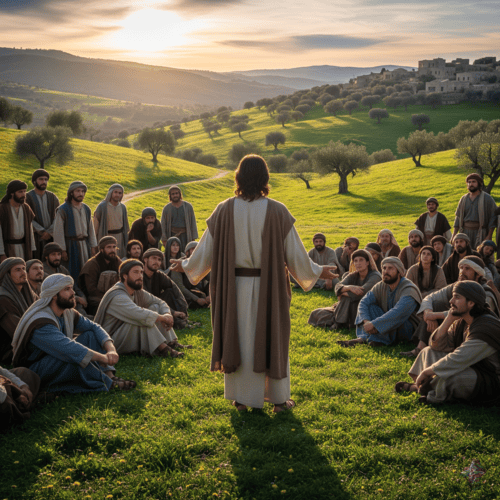
Celibacy Or Castration: What Jesus Really Means in Matthew 19:12
One of Scripture's most shocking misinterpretations led theologian Origen to castrate himself in the third century. His tragic mistake? Taking [...]

Philippians 4:13: Did Paul Really Mean We Can Do ALL Things?
"I can do all things through Christ who strengthens me." It's on gym walls, graduation cards, and motivational posters everywhere. [...]
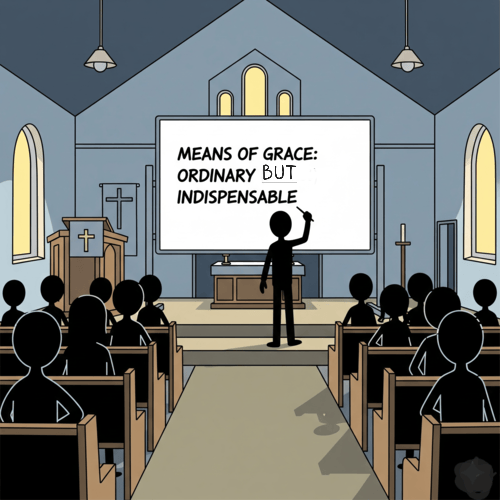
The Ordinary Means of Grace: Why Are They Indispensable?
ORDINARY MEANS FOR EXTRAORDINARY TRANSFORMATION What if God's most powerful work in believers' lives happens through the most ordinary activities? [...]

Is the Bible God’s Word? Or Does It Only Contain God’s Word?
The authority of Scripture stands at the crossroads of modern Christianity. While some argue the Bible merely contains God’s Word [...]

Will We Remember This Life in Heaven? What Isaiah 65:17 Means
"Will I remember my spouse in heaven? My children? Will the joy we shared on earth matter in eternity?" These [...]
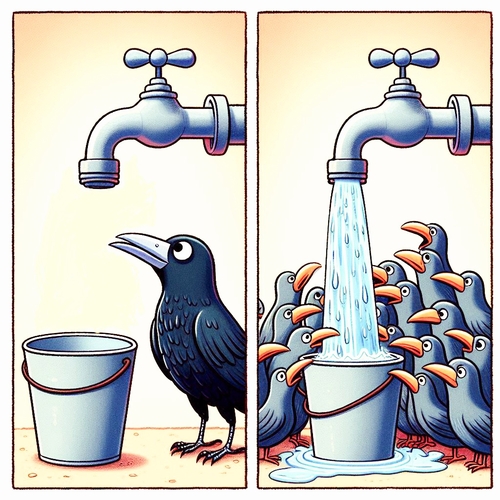
From Empty to Overflow: The Abundant Life Jesus Promised
(AND WHY YOU SHOULDN’T SETTLE FOR LESS) We're surviving, but are we thriving? If we're honest, there's a gap between [...]

What Does Jesus Save Us From?
THREE BIBLE TRUTHS ABOUT SALVATION "Jesus saves." We’ve seen it on bumper stickers, heard it shouted at sporting events, maybe [...]
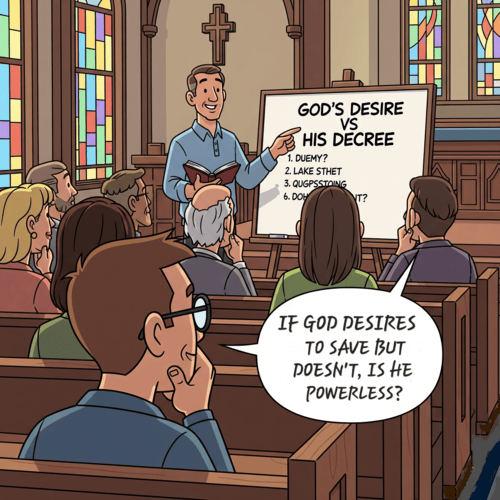
If God Wants Everyone Saved, Why Aren’t They?
THE REFORMED VIEW ON GOD’S DESIRE VS HIS DECREE The question haunts every believer who has lost an unbelieving loved [...]
SUPPORT US:
Feel the Holy Spirit's gentle nudge to partner with us?
Donate Online:
Account Name: TRUTHS TO DIE FOR FOUNDATION
Account Number: 10243565459
Bank IFSC: IDFB0043391
Bank Name: IDFC FIRST BANK



